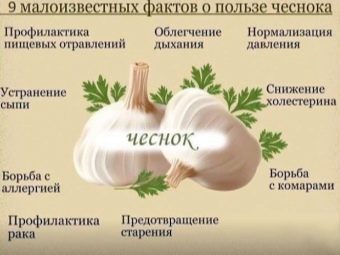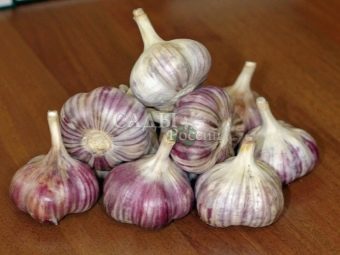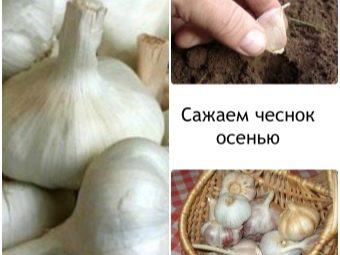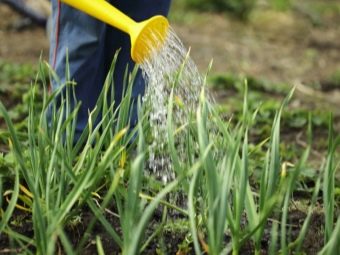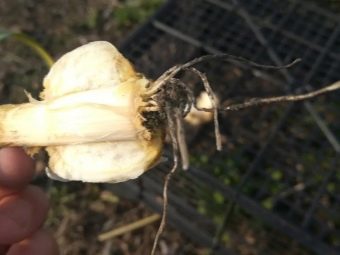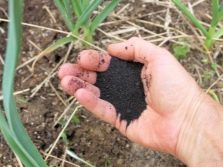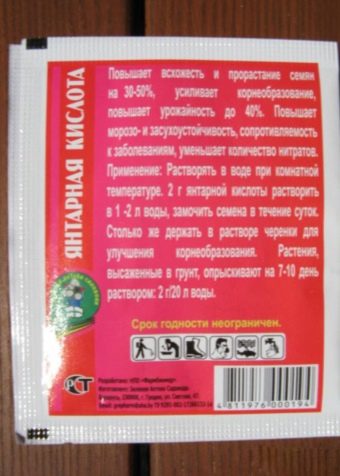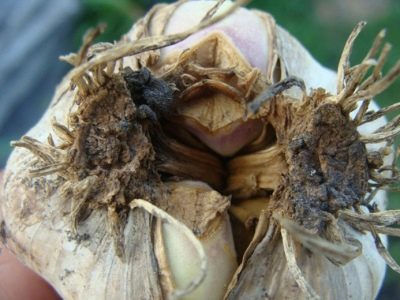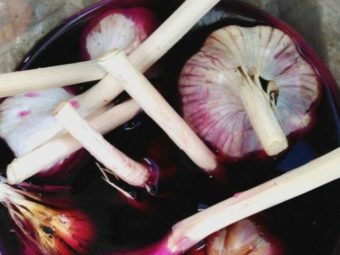What if the garlic turns yellow in spring?
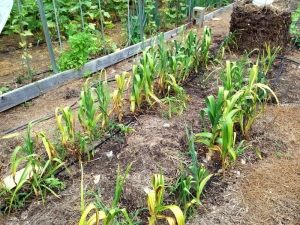
Garlic is quite deservedly attributed to unpretentious agricultural crops, because growing it is quite simple.The vast majority of the owners of their own garden plant this plant for themselves and for sale. Also, this plant is known as an effective medicine, because it contains a large number of useful trace elements and substances that have a positive effect on health and strengthen the human immune system.
Well, first of all, garlic is valued for a very special taste and smell, and therefore it is extremely widely used in cooking. Despite the fact that garlic can be grown in almost any conditions, there is still a chance to face some problems, as it can get sick.
Special features
Worldwide, garlic is one of the most popular vegetables, and its main distinguishing feature is its specific strong taste and aroma. This is a grassy agricultural crop, which biologists refer to the onion family. The best results of this vegetable shows when grown in well-lit areas, where there is a sufficient amount of moisture, and the soil is most fertile. As the planting material can serve the teeth of this vegetable, which you can also just eat. Similarly, young shooters and garlic leaves can be used to cook various dishes and eat fresh.
Professional gardeners conditionally divide garlic into two groups depending on the timing of planting. The first group includes spring garlic, which is planted on the beds, even in early spring, and not in May or June, since night frost is not terrible for this vegetable. Plants of this variety do not give arrows and bring small heads in which there will be approximately up to thirty slices arranged spirally. Such garlic can be stored for a very long time, but a really large harvest of spring garlic will most likely fail.
In the second group, winter varieties of garlic are distinguished. These plants are usually planted in the fall and winter, they spend in the open ground under the protection of snow cover. Winter garlic is well arrowed; it forms rather large heads, in which there can be up to ten cloves arranged in a circular fashion.
Winter varieties are able to produce abundant crops, but it will not work for a long time.
The reasons
All gardeners who love to grow garlic are familiar with such a problem as yellowing leaves. In the spring, the tips of the leaves begin to turn yellow, and at the beginning of summer and the whole leaf may turn yellow. There are many reasons for this, and in order to prevent such a problem, do not repeat the following errors:
- The most common reason for which the green part of garlic turns yellow is the wrong planting. If you do not adhere to the terms and plant the plant too early for the winter, then the greens will grow ahead of time. Because of frosts, at the beginning of spring the leaves will turn yellow.
- Unfavorable weather, too long winter and strong frosts also adversely affect the greens.
- A clove of garlic does not receive all the necessary vitamins.
- Excess or lack of moisture. Garlic is very sensitive to watering. If you disturb the water balance, this will lead not only to the yellowing of the green, but also to the death of the whole plant. Garlic should be watered more regularly in May and June, when greenery grows and garlic heads are formed. Also, we should not forget that garlic tolerates a lack of moisture better than its excess. So during intensive rains it is not necessary to water it in addition.
- Lack of nitrogen in the soil. To prevent this, it should be filled with minerals in the fall and organic matter in the spring.
- Lack of potassium and magnesium. With a lack of these substances in the soil arrows of garlic will grow unevenly and too thin. And in the absence of potassium or magnesium, the garlic roots are damaged, which will cause the whole plant to dry.
- Incorrect landing depth. Garlic should be planted in the ground to a depth of five to seven centimeters and no more.If you break this rule, the leaves almost immediately turn yellow.
- Soiled soil. If you plant garlic in such a soil, the plant will not receive enough moisture and oxygen. Not only the appearance of the plant, but the quality of the crop will be far from the best.
- Planting garlic in frozen ground or in extreme cold.
But not only these causes can cause yellowing of the arrows of garlic. This problem may involve various pests or diseases. The most common disease is chlorosis. With it, the formation of chlorophyll decreases significantly and decreases the activity of photosynthesis. Begins yellowing of the green part of the tip of the arrows right up to the stem.
The disease called fusarium, or, as people call it, “Donets rot”, most often occurs in the southern regions. Due to the excess moisture, the garlic stalks are covered with brown stripes, and the leaves quickly turn yellow. Also, increased humidity can cause the plant to such a disease as basal rot. Arrows of garlic will quickly turn yellow from tip to stem.
But white rot begins to spread from the roots of garlic to the top. Garlic heads begin to rot because of mold, and after that the leaves turn yellow at one moment. The reason for such a terrible disease is too dry weather in spring and a lack of nitrogen.
The most dangerous thing is that white rot can live in the soil for more than thirty years.
Downy mildew can lead not only to the yellowing of the leaves, but even to their blackening. At first, gray spots appear on the leaves, which will slow down the development and growth of the plant. This disease contributes to excessively thickened planting of garlic and cold weather with frequent rains.
What to water and feed?
Top dressing is a great way to strengthen and restore the plant after frost. It also helps to saturate the soil with nutrients.
When dry fertilizing fertilizer can be applied under the plant in a dry form, and for this you first need to break through the soil between the beds of garlic. After fertilizer is added there and sprinkled with earth on top. Be sure to after making dry dressing need to water the beds well. To preserve moisture, you can mulch the beds with compost.
Root feeding is done by applying fertilizer directly under the garlic root itself. Depending on the purpose, you can use both ready-made special substances and organic. Any solution is watering the plant from a watering can or bucket.
Foliar fertilization occurs by spraying the leaves with liquid solutions. Basically, these are either ready-made complex fertilizers, or potassium. The dosage and the amount of solution for one bush are basically different, so it is important to follow the instructions of the manufacturer of the substance with which you feed the plants.
Leaves and tips of garlic plants that have been damaged due to low temperature can be treated with growth stimulants. Such drugs can significantly strengthen the immune system of vegetables and accelerate the growth of new leaves. The composition of such funds usually include growth regulators of natural origin. For example, it can be triterpenic acids, which are obtained from coniferous trees. Such substances, in addition to accelerating growth, also have antifungal properties.
One of the most popular top dressing drugs commonly used by gardeners is Epin. The main active ingredient of this agent is a special adaptogen, which strengthens winter and spring garlic well, after which the plant is better able to resist various stresses. In garlic, processed "Epin", the immune system works at its maximum capacity, making it less susceptible to frost, dry weather, as well as sudden changes in temperature.In addition, the formation of new shoots is significantly accelerated, due to which young shooters quickly grow on the site of dead leaves, which facilitates care.
Vegetables that have suffered due to adverse weather conditions are watered with a solution on the basis of “Epin” every seven days until its full recovery, and for irrigation it is necessary to take only rainwater, not tap water.
Another common product for the treatment of agricultural crops is succinic acid, which is obtained by specific processing of amber. This tool shows itself very well when processing plants belonging to the onion family. This drug is a source of nutrients and trace elements, resulting in the growth of garlic is greatly accelerated. However, this is not the only positive effect, which gives the treatment of succinic acid. In addition, this drug:
- makes garlic resistant to the most common diseases;
- effectively restores the plant after pest attacks;
- helps to tolerate frosts and droughts in the garden.
Beginners like to use succinic acid, who have little experience in using fertilizers and fertilizers, since it is simply impossible to overdose this substance. Plants treated even with a strong solution of this drug, take from it a strictly defined, necessary amount of active substances.
In order to prepare a solution based on succinic acid, you first need to dissolve 5 grams of this agent in a small volume of warm water. Then, the resulting concentrate is added to a ten-liter bucket of clean rainwater, and the means for watering and spraying garlic is ready. Succinic acid is a tool that can be easily found in the free market in specialized gardening shops and sometimes even in the most ordinary pharmacies.
One of the most common causes of yellowing is perinospora. Because of this disease, peculiar yellow spots first form on the leaves of the plant, and as the disease progresses, the leaf acquires a mucous texture, its lower part becomes covered with mold, and then disappears completely. It should be noted that peronosporosis is distributed not only among garlic, but all members of the onion family.
Save garlic from perinospora can only be due to the treatment of potent antifungal drugs that can stop the development of this disease. However, it would be best to prevent infection and from the very beginning to feed garlic with various means that strengthen the immune system, since diseases usually affect weak and damaged plants.
Also, gardeners are often faced with such a disease of garlic, as rust. This disease can be recognized by small spots of red color, which in large numbers begin to cover the feathers, and then move on to the whole plant. Just as in the fight against peronospora, rust treatment of garlic is carried out with the help of specialized antifungal drugs, which can be found in stores for summer residents.
Due to the fact that garlic grows in a soil with a high acidity index, its general condition can worsen greatly and the leaves turn yellow. If the garlic is planted in such a land, the plant will be weak, and its growth will be very slow, since the normal process of absorbing nutrients from the soil will be disturbed. Bring the acid balance back to normal and save the garlic by treating the area with lime, chalk or dolomite flour.
However, this event should be carried out in advance, and not immediately before planting garlic on the beds.
There are also popular methods of combating yellowed garlic leaves. These tools are available and easy to use and are well suited to those who do not want or do not have the opportunity to work with chemicals and other professional means.Experienced gardeners and gardeners know how to treat the beds and cope with most diseases and pests on their own.
Quite often, garlic attacks such a pest, like an onion fly, which lays eggs in the leaves of this plant. Decontaminating the plant from this pest is not difficult on its own; it is enough just to prepare a saline solution. To do this, about 300 grams of salt is diluted in a bucket of water and sprayed with this solution of the plant. After this procedure, the flies should leave the garlic alone and the condition of the plants will return to normal. The main thing, after treatment with saline solution for the next day, shed the beds with clean water.
Such a pest, like a nematode, is able to deliver a whole lot of trouble when growing garlic, because you can not get rid of it by any popular or professional means. Moreover, the embryos of this pest have been living in the earth for many years without any food, which is why crop rotation will not help either. Nevertheless, for the reason that the nematode is able to live only in the soil with high acidity, it will suffice to cultivate the land with lime or chalk.
It will be good to plant a calendula between the beds, since the juice of this plant is poisonous to pests.
To prepare effective dressings for garlic, people often use such available means as ordinary ash or ammonia. Plants need a substance like nitrogen, and ammonia will be its source. Top dressing on the basis of ammonia can strengthen garlic and help it cope with the most common diseases and pests. To prepare such a tool, you need to add a couple of tablespoons of ammonia in a ten-liter bucket of water. It is necessary to water the plants with this agent at the end of spring, because during this period the need for nitrogen becomes more acute, besides, ammonia can reduce the acidity of the soil, which also has a good effect on the state of garlic and helps to fight yellowing leaves.
To provide garlic with trace elements such as potassium and phosphorus, people most often use ash. To prepare ash-based root make-up, take 250 grams of this material and dilute it in ten liters of pure water, then leave the solution to infuse for at least a couple of hours. It is even easier to fertilize plants with ash in rainy weather - it will be enough just to scatter it on wet ground, and with the next rain all the nutrients will flow to the roots of the plant by themselves.
Prevention
For effective prevention of spring yellowing of leaves, the best recommendation would be strict adherence to the rules of crop rotation. Professional farmers advise planting garlic in old places at least once every three years. This is due to the fact that during this period many pathogenic bacteria and fungal spores that live in the earth, lose their harmful properties.
Prevention of the yellowness of garlic leaves is also achieved through proper farming practices. The most common violation is a shallow planting, due to which the plants are very cold and the feathers do not just begin to turn yellow, but immediately grow yellow. Another major mistake will be the premature planting of this crop, since the garlic planted before winter is always at risk of frost.
At the same time, winter garlic is recommended to be planted on the beds no earlier than mid-autumn, so that the plant can root well, but did not have time to throw out the first arrows.
If garlic suffers from pathogens that cause it to turn yellow, then the problem may lie in the planting material itself. Before planting, it must be sorted out, and if necessary, additional treatment should be carried out with various disinfectants and nutrient solutions.You can not plant garlic, on which specks of rot or mildew are noticeable, and it is not recommended to fertilize it with fresh manure, as it can often be pathogens.
The causes of yellowing of the leaves and arrows of garlic are vast. For this reason, even before treating the plants, it is necessary to carry out a number of diagnostic procedures in order to determine the source of the problem, and only then proceed to the elimination of diseases and all sorts of pests. It is also very important to plant garlic in strictly recommended periods, which may differ depending on the region where the site is located. Thus, in the southern regions, winter varieties are usually planted in November, and in middle latitudes, not later than the third week of October.
If the garlic did not tolerate the winter and its leaves turned yellow, then in no case should it be cut off, since each arrow is connected with a clove and helps it to develop properly. If such a feather is torn off, then the size of the clove will eventually be very small.
As a preventive measure to prevent freezing of the beds, they must be covered with a layer of humus for the winter period. If for any reason this procedure could not be carried out, then with the onset of spring, the beds are treated with special biological agents that must have anti-stress properties. Good results are shown by the alternation of root and foliar fertilizing with a frequency of 15 days.
The worst condition for the cultivation of garlic is not enough fertile land - in most cases, yellowed feathers are a clear sign that the plants need nitrogen. Experienced gardeners and gardeners add compost or manure to this soil in the fall, but rotted. If with the onset of spring you can still notice the yellow feathers, then this can be corrected by top dressing, which can be done immediately after the snow melts. Fertilizing with nitrogen fertilizers is carried out during active rifling, that is, until summer.
To prevent damage to plants and pests, you can use urea, which is introduced between the rows of beds. This substance is used both in dry and in liquid form, that is, dissolved in water. In addition, to give garlic a large amount of nitrogen in a short time by spraying the feathers with a solution of ammonium nitrate.
Another preventative measure is timely mulching, for which materials such as compost or humus are used. They need to expand on the beds after the first time will be loosening. Mulching is able to provide plants with nutrients during the entire period of active growth.
As practice shows, the leaves actively turn yellow with insufficient watering or with its excess. Violation of water balance leads to the fact that the growth of culture will be disrupted and it will cease to develop properly - in this case, measures must be taken. It is also important to remember that garlic is a plant that tolerates dry weather much easier than excessively wet. The correct pattern of watering the beds with garlic will help prevent yellowing of feathers. So, if there is a large amount of precipitation, then the plants do not need to be watered at all, and if there is little rain, then it is necessary to water once every two weeks, if not at all, then watering is required to be done about once a week.
Professional agrotechnologists say that it is much easier to prevent diseases of garlic and yellowing of leaves than to treat them. One of the effective prevention measures will be soaking the planting material in special solutions. Before planting garlic cloves in the garden, you can soak them in a weak solution of potassium permanganate or phytosporine, where they are kept for about half an hour. It is also possible to additionally disinfect not only planting material, but also the ground itself, for which it is enough just to water the beds with one of the above mentioned means.
Yellow feathers and garlic leaves can be quite normal when it comes to the moment of harvest of this vegetable. When the arrows turn yellow and begin to dry, it means that it’s time to start cleaning. For spring garlic, this will be the end of summer or the beginning of autumn, and for winter varieties, the harvest time begins in July.
After the crop is harvested, the plot needs to be prepared for the next season.
About why garlic turns yellow in the spring and what to do, see below in the video.

